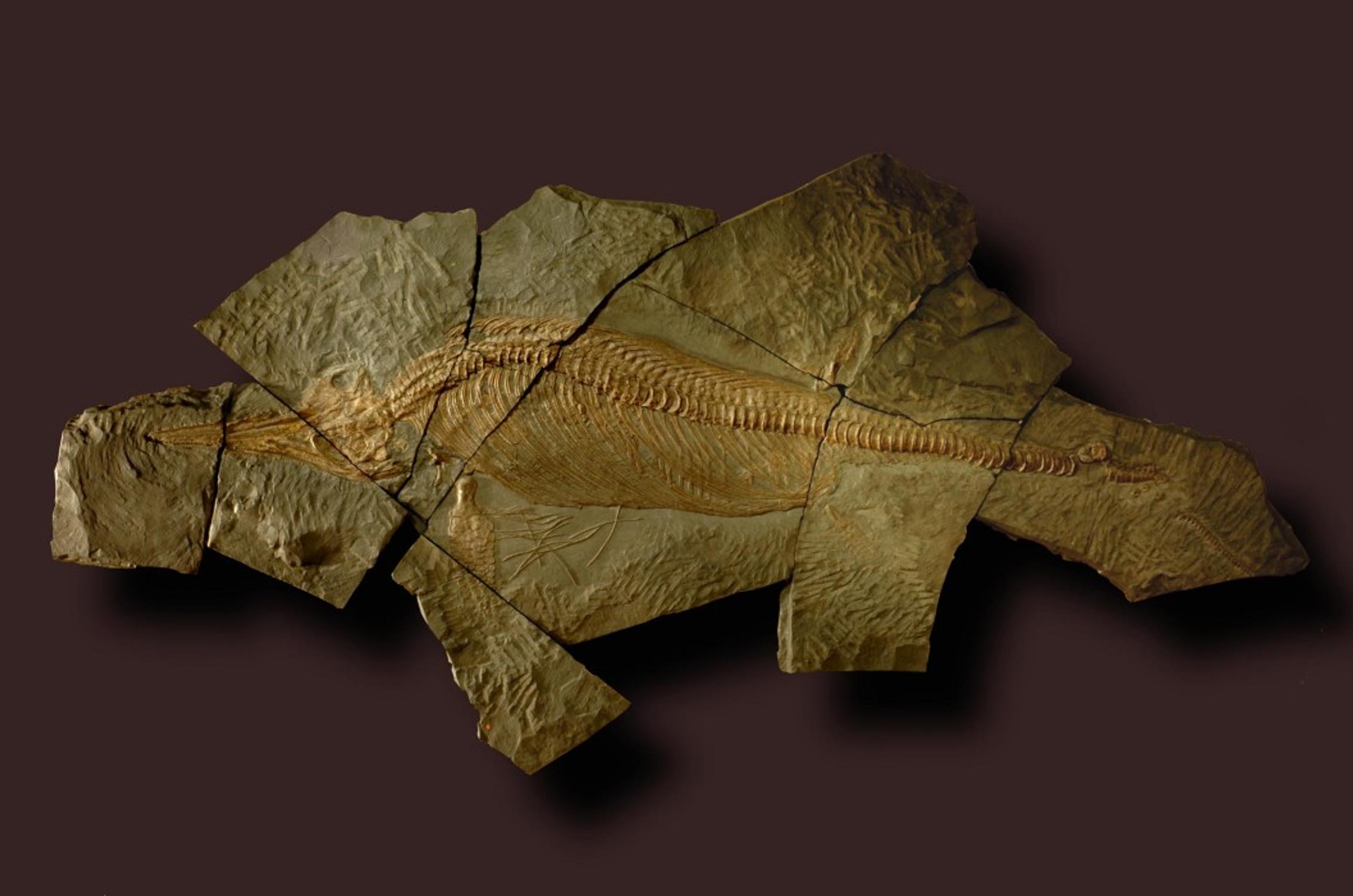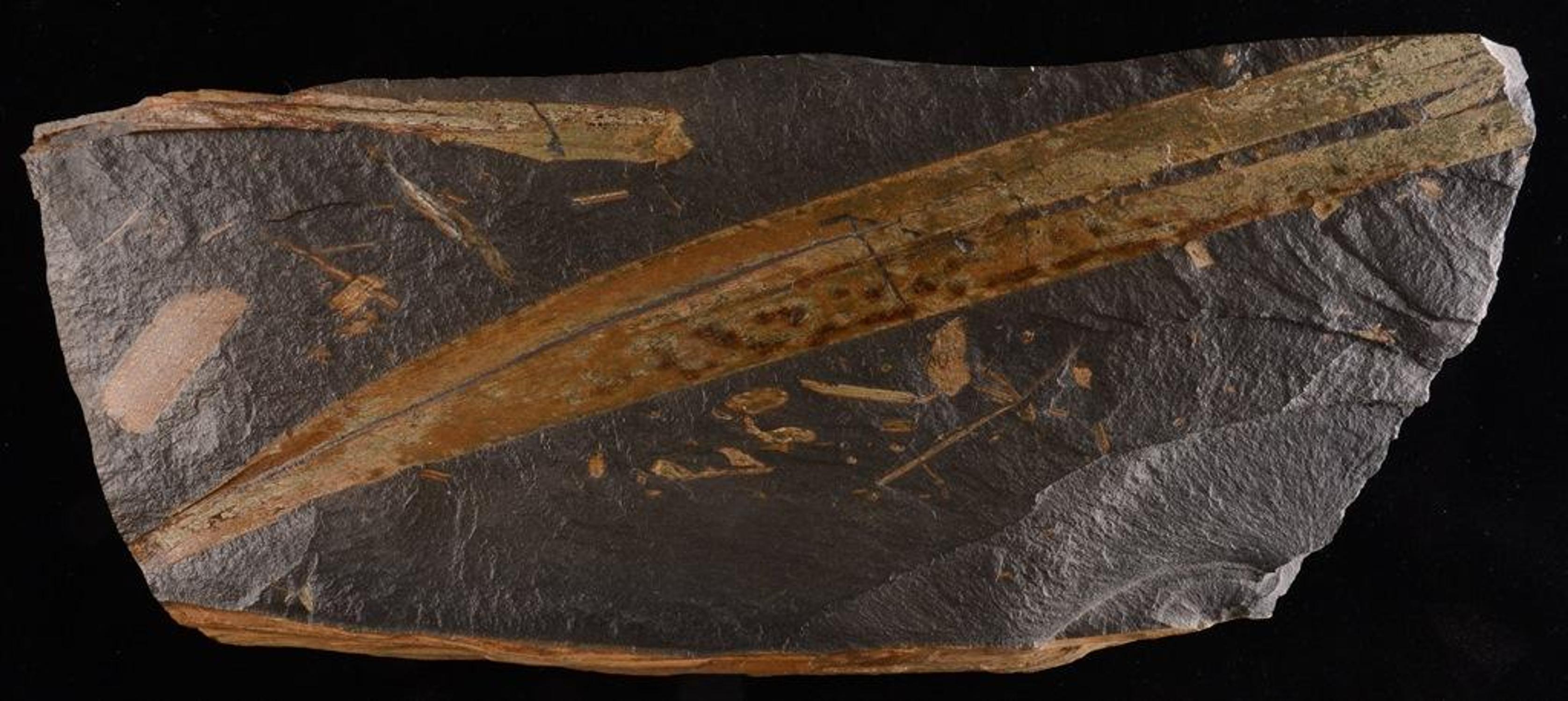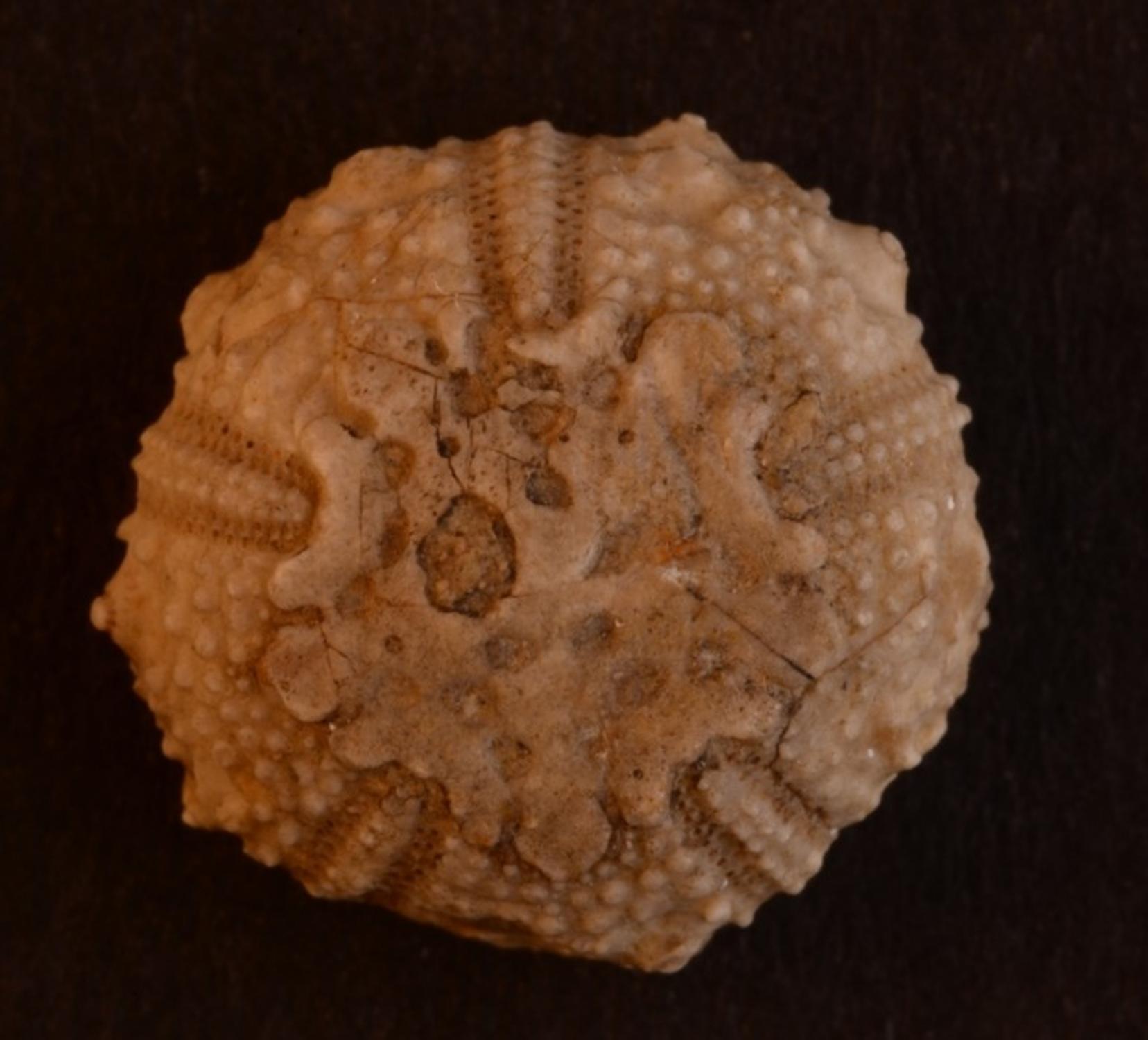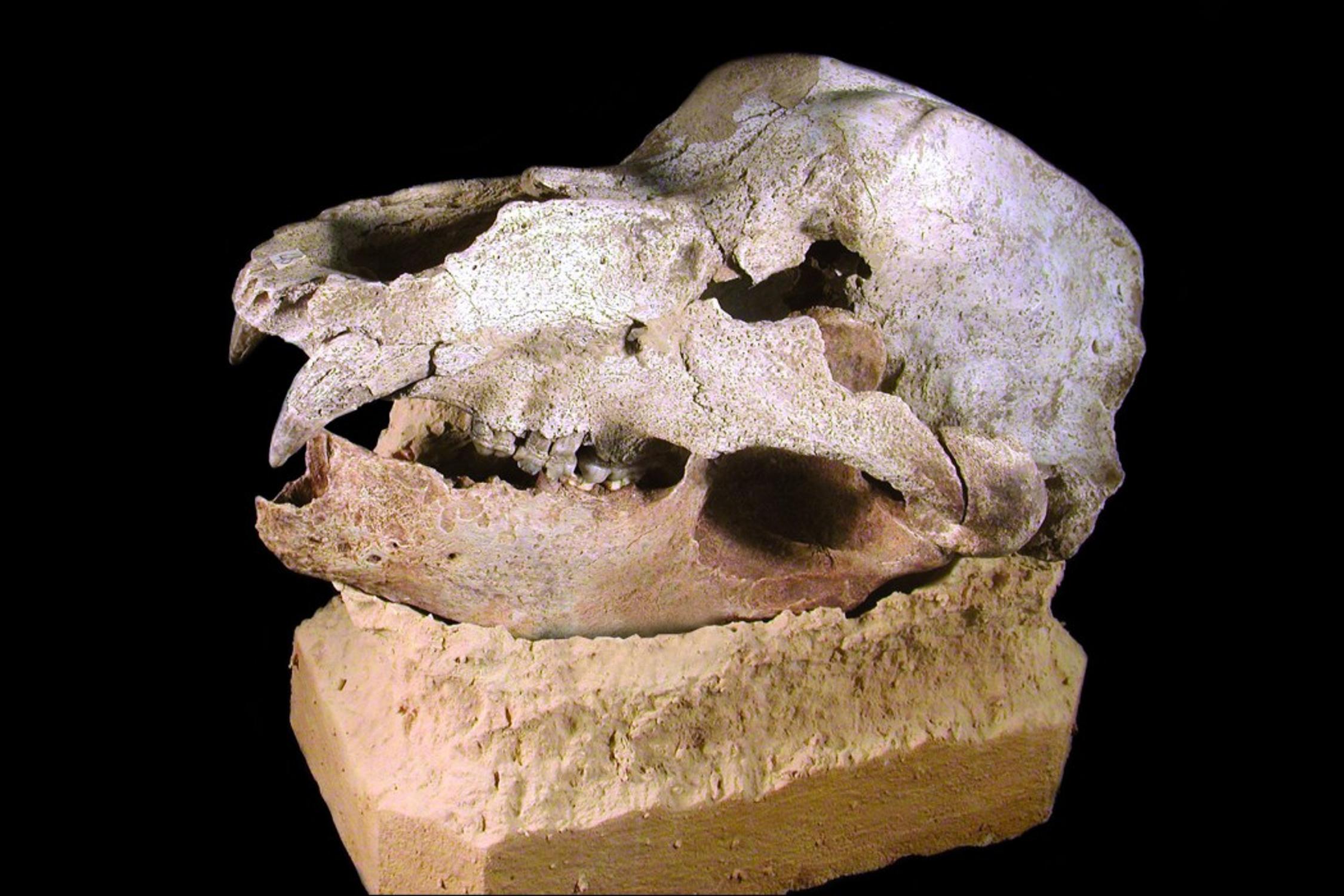PALEONTOLOGY
Collections of paleontology
They are subdivided in 3 big groups : animals said invertebrates fossils (23.300 batches), the vertebrate fossils (20.000 species), and fossil plants (3.650 species).
If it is possible to identify parts from the Cabinet, the great heritage and scientific collections date from the 19th century. At that time paleontological collections are of an encyclopedic type; they sweep all the great groups alive. They will be more specialized from the 20th century nowadays.
Acquisition policy these last decades, carries:
- Restricted numbers of pieces coming from the whole world, each specimen being exceptional, is destinated to be exposed and carries scientific heritage. Great part of these specimens are shown during the permanent course;
MHNGr.PA.36164 Stenopterygius quadriscissus, 3 m long ichthyosaur from Holzmaden (Germany). Specimen exhibited in the room dedicated to fossils.
- Pieces from local deposits harboring recognized potential scientific studies ;
MHNGr.PA.33747 Cordaites sp. Leaf of an arborescent plant. The sample measures 40 cm. Collected in 2005 by Bruno Vallois, it is featured in the review Fossile N°21-2015.
MHNGr.PA.384-1 Salenia grasi. Echinid from the collection of Albin Gras, described and figured by Gustave Cotteau in 1861 in Alcide d'Orbigny's French Paleontology.
Invertebrates fossils :
Among all the preserved collections, Albin Gras stands out, given in 1856. In frequent contact with Alcide d’Orbigny, we find 402 direct occurences on pieces and/or the publications of Albin Gras in “ French Paleontology: zoological description and geological of all the mollusks animals and radiated fossils of France”. Ancient publications testifies the scientific importance of this collection, especially the Albin Gras organized bodies fossils catalog, in the newsletter from the statistics society of natural sciences and industrial arts from the Isere department (1852), who conceals all descriptions from new fossils species discovered and described by the author (typification).
Other collections deserve to be cited, notably that of Eugene Chaper which includes parts coming from the Repellin’s collection. The Jourdan’s collection which was given to the city of Grenoble in 1893. Another important collection is that of General Leon de Lamothe who was settled to the city in 1937. It includes parts from his father Benjamin de Lamothe as well as parts coming from scientists crossing his path.
On the fossils vertebrates side :
The great majority of this division is constituted of cave bears and associated fauna. Great part of the equipment comes from excavations (local caves) carried out between 1956 and 1965 then around 1990. It’s about a study collection by excellence. Support of two doctoral theses, it is still carried out morphometric surveys on that collection.
MHNGr.PA.11752 Ursus spelaeus. Cave bear skull collected by Paul Lequatre in the Prélétang cave during excavations organized between 1956 and 1965.
MHNGr.PA.33754-1 and 2 Lepidostrobus hastatus. Imprint and counter-imprint of a strobili of a Carboniferous plant discovered by Bruno Vallois in the town of Vaulnaveys-le-bas (Isère).
And for the Paleobotany
Initiated by ancient acquisitions (18-19th century) issued from mines closed today, this collection is actually in full extension phase with the arrival in 2013 of the Bruno Vallois’s collection. This acquisition raised to 134% the number of species. Many of those species have extra-regional origins (Hauts-de-France region) .However this tendency is reversed with the important entries of recently collected parts in the region.





